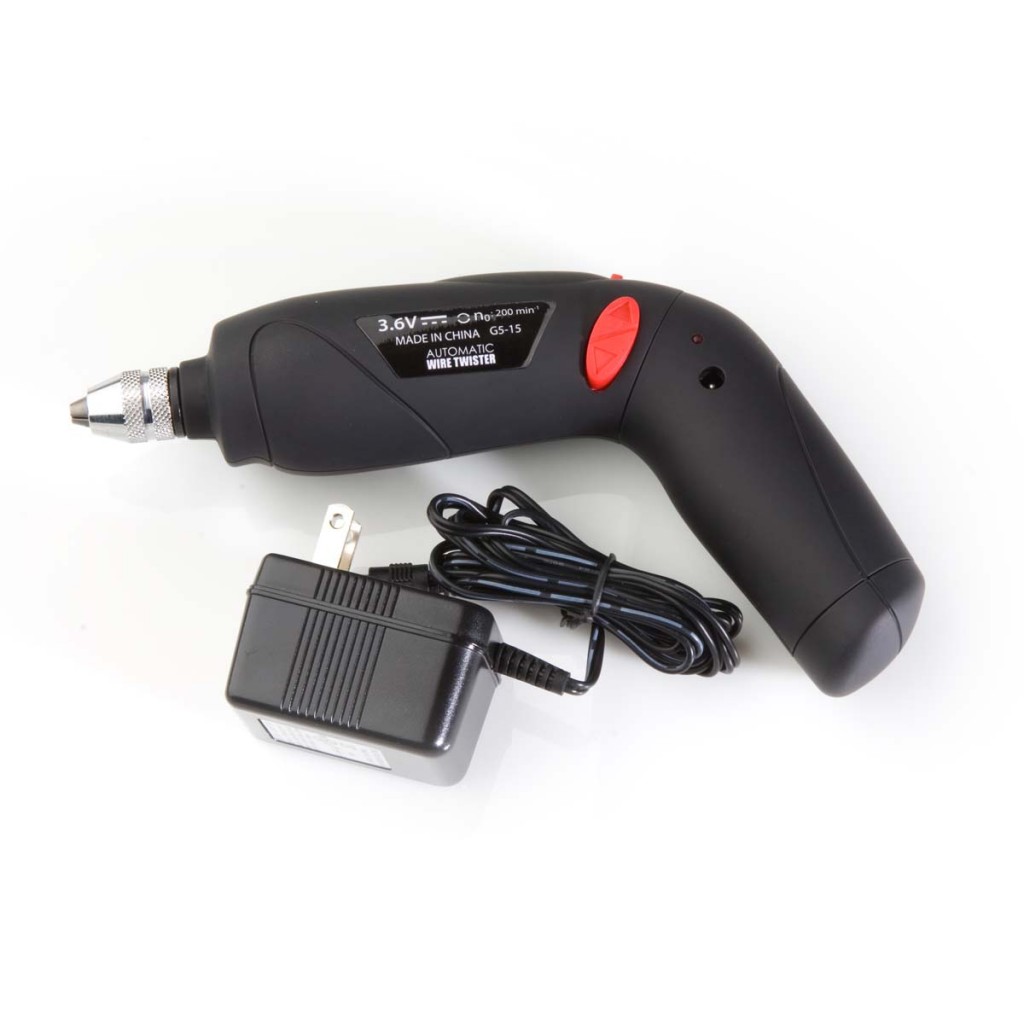- NEW DVD Series – Stone Setting with Bezels
- Tube Set Charm by Kim St. Jean
- Prong Basket Pendant by Kim St. Jean
- NEW DVD Series – Stone Setting with Cold Connections
- New DVD Series – Stone Setting with Wire
- NEW DVD Series: Introduction to Stone Setting by Kim St. Jean
- Featured Tool: Bracelet Bending Plier
- NEW Dvd by Eva Sherman
- Fun, Fast Fold Forming DVD Series
- Double Band Ear Cuff from Alex Simkin
Get to Know Your Hand Tools – The Hand Drill by Helen I. Driggs
by Judy Ellis, Wirejewelry.com
Wire Jewelry Tip for July 11th, 2017
The Hand Drill
by Helen I. Driggs
Lovers of twisted wire take note: A hand drill will change your life forever. When repurposed for metalwork, this simple tool can transform wire of any size and/or shape and/or strips of thin gauge metal sheet into interesting textured, twirled and twisted designs. All you need add is a hardware-store hook (or not) and have access to a sturdy bench or shop vise. Use twisted wire the same way you use other wire: make jump rings, wire wrap with it, or solder it to other fabricated metal parts and pieces for a decorative effect.
What to know about hand drills
Hand drills are the precursors to the handy portable power drill that every home repair enthusiast knows and loves. What all drills do is simple: they employ a three-sectioned “Jacobs” chuck that can be opened and closed using a chuck key. Simply insert a drill bit or other attachment in the chuck and you are good to go. The drill motor spins a shaft that the chuck is mounted on and the speed of is controlled by a trigger control. In our case, the wire spins under hand power instead.
Tips for using a hand drill
- To use the hand drill, insert a hardware store “cup hook” into the Jacobs chuck and clamp it down tightly. Fold a length of wire in half and capture the two loos ends in the bench vise. Slide the U-shaped other end over the cup hook. Turn the handle on the drill. It helps to pull back from the vise to keep tension on the wire as you twist.
- Cranking clockwise or counter-clockwise will result in different twists, and so will different gauges of wire. A nice after effect with twisted wire is to then hammer it flat on a bench block.
- If you can’t find a hand drill, you can employ a hand-held power drill for these techniques, but take care and always wear goggles if you do because working at high speed may cause tightly twisted wire to snap more quickly than it might under human power.
HELEN I. DRIGGS is an experienced metalsmith, lapidary and studio jewelry instructor and has appeared in 6 instructional jewelry technique videos. Her book, The Jewelry Maker’s Field Guide was published in 2013.
You can find a 3.6 Volt Automatic Wire Twister (Cordless Screwdriver) of your very own on our website WireJewelry.com
Happy Wrapping!
![]()
Click to Receive Daily Tips by Email




















0 comments